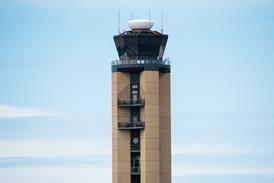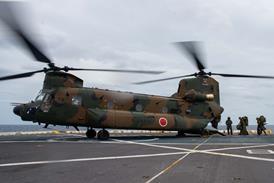RADHAKRISHNA RAO / BANGALORE
India may soon become locked in a race with China to be the first developing country to send a probe to the moon
India began its space journey in a modest way in 1963 with the launch of a 9kg (20lb) sounding rocket from a research facility at Thumba, a fishing hamlet on the outskirts of Thiruvananthapuram, state capital of Kerala. The ambitious south Asian country is now on the verge of launching an unmanned mission to moon.
India's proposed lunar probe, the go- ahead for which is still awaiting government approval, has moved further up New Delhi's priority list in the wake of the emergence of China's plans to send a probe to moon by the middle of this decade in association with the European Space Agency (ESA). A lunar attempt is one of several possible joint space missions being discussed by China and the ESA.
Whether or not India will become the first developing country to reach the moon - or whether China will achieve this distinction - is difficult to determine. The Indian Space Research Organisation (ISRO) has made it clear that it will be able to send a mission to moon within five years of getting the go-ahead from the government.
The ISRO can trace its history back to June 1972 when the organisation was established under the government's Space Commission and Department of Space, with the objective of developing satellites, launch vehicles, sounding rockets and their associated ground systems.
In August 2000, Vasundara Raje, minister of state in the prime minister's office, told the Indian parliament that the Indian lunar mission would boost the country's scientific capabilities and strengthen its competence in areas such as space navigation and robotics. She also argued that India cannot remain a "mute spectator" to worldwide interest in the moon, rekindled by the discovery of what is believed to be water on the lunar surface.
On the other hand ISRO chairman Dr K Kasturirangan is keen to turn India into a global space power and believes the country should also take a prominent role in international efforts to push back the boundaries of space exploration.
However, India's proposed lunar probe is a clear deviation from the basic philosophy of the Indian space programme: harnessing the potential of space technology for the socio-economic development of the country. With modest budgetary support, the ISRO has been successful in designing, developing, launching and using a string of earth observation and communications spacecraft to support wide-ranging developmental activities in the country. The indigenous Indian Remote Sensing Satellite (IRS) series of remote sensing satellites and the Insat series of communications spacecraft are the cornerstones on which the Indian space programme rests.
More than three decades ago, Dr Vikram A Sarabhai, widely regarded as the architect of the Indian space programme, outlined what he considered should be India's objective in space: "We do not have the fantasy of competing with the economically advanced nations in the exploration of the moon or planets or unmanned flights. But we are convinced that to play a meaningful role nationally and in the community of nations, we must be second to none in the application of advanced technologies to the real problems of man and society which we find in our country."
However, the ISRO is now of the view that an Indian moon probe will go a long way towards solving many of the least understood lunar mysteries. Furthermore, the Indian government believes the lunar mission is a logical extension of India's growing prowess in sectors such as computer programming, nuclear energy and stem cell research.
Landing challenge
The ISRO says: "A lunar mission can provide impetus to science in India, a challenge to technology and possibly a new dimension to international co-operation. It can also serve as a testbed for missions that can be undertaken by India to explore the outer world in the new millennium."
The ISRO says it has the option of sending either a fly-by mission or a lunar orbiter. The latter would allow scientists to study the moon at close quarters by orbiting, rather than conducting a single fly-past. For now, however, building a spacecraft for a soft landing on the lunar surface to collect, process and transmit data back to earth will be a difficult proposition.
As such, the most attractive option before the ISRO is sending an orbiter. The Ahmedabad-based Physical Research Laboratory, the cradle of space sciences research in India, is equipped to fabricate the experimental package for the mission, while the ISRO Satellite Centre is capable of designing and developing a lunar orbiter indigenously. ISRO scientists believe that the key objectives of the Indian moon mission could include investigation of the particulate and radiation environment around the moon and the detailed mapping of the lunar surface and atmosphere with high-resolution stereoscopic photography to provide detailed, three-dimensional pictures.
By and large the Indian scientific community feels that, just as the USA's manned mission to the moon changed the direction and complexion of industrial and technological growth in the USA, a lunar probe could just be the shot in the arm that Indian science and technology is looking for. However, this is not to suggest the project has no critics in the country.
For example, Dr H S Mukunda, chairman of the aerospace department at at the Indian Institute of Science in Bangalore asks: "Why don't we work on something ground-breaking? Why do we need to do something that has already been done 30 years ago and many times more?"
Preliminary analysis by the ISRO reveals that both the four-stage Polar Satellite Launch Vehicle (PSLV) and the three-stage Geosynchronous Satellite Launch Vehicle (GSLV) could be deployed for launching the Indian lunar probe.
Studies by the ISRO show that the 294t heavy PSLV equipped with alternate solid and liquid fuel stages, through the modification of its upper stage into a translunar injection stage carrying 2,200kg of propellant, can send a 530kg spacecraft on a fly-by mission or a 350kg spacecraft in orbit around the moon. Alternatively, the 401t GSLV equipped with a Russian-supplied cryogenic engine stage can send a 850-950kg spacecraft on a fly-by mission or a 600kg spacecraft in moon orbit after incorporating the translunar injection stage containing 3.4t of propellant.
The PSLV is a candidate to launch India's first-ever Microgravity Research Satellite, which is still at the conceptual stage. The PSLV was originally designed to launch a 1t-class IRS into a polar/sun-synchronous orbit. It is being offered as a cost-efficient booster for low- and medium-earth orbit missions. During a flight last October, the PSLV placed into orbit a German-built research satellite and Europe's technology demonstrator Proba as piggyback payloads along with an Indian remote sensing spacecraft called the Technology Experiment Satellite. This was the second commercial mission performed by the PSLV.
Launcher upgrade
Meanwhile, the ISRO has decided to uprate the PSLV to make it suitable for geosynchronous-orbit missions. A flight of the uprated PSLV some time this year would place an Indian weather watch satellite into a geosynchronous orbit.
The high-performance GSLV completed its debut flight in April last year. The objective of the GSLV is to help India attain a capability to launch its Insat-class domestic satellites, currently orbited using European Arianespace boosters.
India is now not only developing an indigenous cryogenic engine stage as a substitute for the Russian-made engine but is also is involved in developing an uprated GSLV Mark III vehicle capable of launching a 4.5t-class satellite payload into a geostationary orbit. Like the PSLV, India is also planning to market the services of the GSLV.
India's almost 40-year journey into space looks like entering an exciting new dimension, with huge potential benefits - and not insignificant risks - for the developing nation.
Source: Flight International























